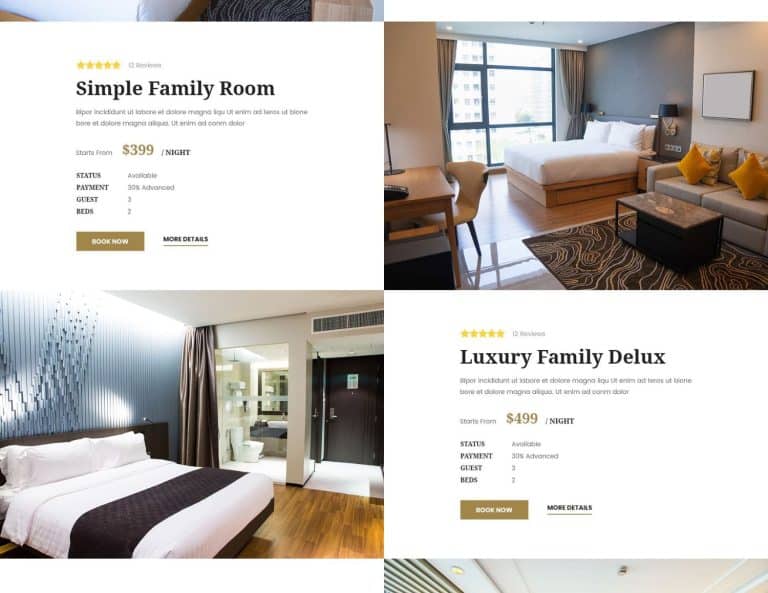Looking for a hotel to stay in? Wondering what the difference is between full-service hotels and limited-service hotels?
If you’re short on time, here’s a quick answer to your question: Full-service hotels offer a wide range of amenities and services, while limited-service hotels provide basic accommodations with fewer amenities.
In this article, we will explore the key differences between full-service hotels and limited-service hotels, helping you make an informed decision for your next trip.
We will cover the following aspects:
1. Amenities and Services
Variety of amenities in full-service hotels
One of the key differences between full-service hotels and limited-service hotels lies in the range of amenities they offer. Full-service hotels are known for providing a wide array of amenities to cater to the needs and desires of their guests. These amenities often include multiple on-site restaurants, bars, spas, fitness centers, swimming pools, concierge services, and room service. Full-service hotels strive to create a luxurious and indulgent experience for their guests, ensuring that they have everything they need for a comfortable and enjoyable stay.
Basic amenities in limited-service hotels
In contrast, limited-service hotels offer more basic amenities, focusing primarily on providing guests with the essentials. While they may still offer amenities such as complimentary Wi-Fi, parking, and continental breakfast, they typically do not have the same extensive range of options as full-service hotels. Limited-service hotels are designed to cater to travelers who are looking for a budget-friendly accommodation option without the added frills and luxuries. They provide a comfortable and convenient place to stay for travelers who are primarily focused on exploring their destination rather than spending time within the hotel itself.
For more information on the amenities provided by full-service hotels, you can visit Marriott. Similarly, if you want to learn more about limited-service hotels and their basic amenities, you can check out Hilton.
2. Dining Options
Multiple dining options in full-service hotels
One of the key differences between full-service hotels and limited-service hotels is the dining options they offer. Full-service hotels typically have multiple dining options available for guests. From fine dining restaurants to casual cafes and even room service, these hotels aim to provide a wide range of culinary experiences. Guests can enjoy a delicious breakfast, a quick lunch, or a leisurely dinner without having to leave the hotel premises. The menus in full-service hotels are often diverse, catering to different tastes and dietary preferences. Whether you’re craving international cuisine, local delicacies, or a hearty steak, full-service hotels have got you covered.
According to a study conducted by the American Hotel and Lodging Association, 78% of full-service hotels have at least one on-site restaurant, while 45% have multiple dining options available. This statistic highlights the emphasis full-service hotels place on providing a comprehensive dining experience for their guests.
Limited or no dining options in limited-service hotels
On the other hand, limited-service hotels have limited or no dining options available. These hotels typically focus on providing basic accommodation without the added amenities and services offered by full-service hotels. Due to their smaller size and cost-saving measures, limited-service hotels may not have the space or resources to accommodate multiple dining establishments.
While limited-service hotels may not have on-site restaurants, they often provide alternative options for guests. This may include a small breakfast area where guests can enjoy complimentary breakfast items such as pastries, cereals, and coffee. In some cases, limited-service hotels may also partner with nearby restaurants or offer delivery services from local eateries, allowing guests to dine off-site.
It’s important to note that the lack of dining options in limited-service hotels doesn’t necessarily mean a compromise in quality. Many limited-service hotels prioritize the comfort and convenience of their guests by ensuring that nearby dining options are easily accessible and of good quality.
For more information on dining options in hotels, you can visit the website of the American Hotel and Lodging Association at www.ahla.com.
3. Room Types and Sizes
Wide range of room types and sizes in full-service hotels
In full-service hotels, you can expect to find a wide variety of room types and sizes to suit your preferences and needs. Whether you’re traveling alone on a business trip or on a family vacation, these hotels offer a range of options to accommodate everyone. From cozy single rooms to spacious suites, you’ll have the freedom to choose what best suits your requirements. Some full-service hotels even offer specialty rooms such as executive suites, honeymoon suites, or rooms with extra amenities like private balconies or jacuzzis.
Standard rooms with limited options in limited-service hotels
On the other hand, limited-service hotels typically offer a more standardized experience when it comes to room types and sizes. They often focus on providing basic accommodations with a limited range of options. These hotels usually offer standard rooms with essential amenities such as a comfortable bed, a bathroom, and a small workspace. While the room sizes may vary slightly, they generally adhere to a more uniform layout.
It’s important to keep in mind that the specific offerings and amenities may vary between individual hotels within each category. Therefore, it’s always a good idea to check the hotel’s website or contact them directly to get more detailed information about the room types and sizes they offer.
4. Staff Availability
24/7 staff availability in full-service hotels
One of the key differences between full-service hotels and limited-service hotels is the availability of staff. Full-service hotels pride themselves on providing round-the-clock service to their guests. This means that no matter what time of the day or night you may need assistance, there will always be a staff member available to help you. Whether it’s a late-night room service order or a request for extra towels, you can count on the staff to be there for you.
According to a survey conducted by the American Hotel and Lodging Association, 85% of full-service hotels have staff available 24/7. This ensures that guests receive the attention they need, whenever they need it. Having staff on hand at all times allows full-service hotels to provide a higher level of customer service and cater to the needs of their guests at any hour.
Limited staff availability in limited-service hotels
On the other hand, limited-service hotels have a different approach when it comes to staff availability. While they still have staff members to assist guests, their availability may be restricted to certain hours of the day. Limited-service hotels often have set hours for their front desk, concierge, and other services.
This limited staff availability is usually reflected in the lower room rates of limited-service hotels. By reducing the number of staff members and their availability, these hotels can offer more affordable accommodations to budget-conscious travelers. However, it’s important to note that limited-service hotels still strive to provide excellent service within their operating hours.
It’s worth mentioning that while limited-service hotels may have limited staff availability, they often have a variety of self-service amenities that allow guests to access certain services or facilities independently. This can include things like self-check-in kiosks, grab-and-go food options, or fitness centers that are accessible 24/7.
It’s always a good idea to consider your needs and preferences when choosing between a full-service hotel and a limited-service hotel. If you require round-the-clock assistance and a higher level of personalized service, a full-service hotel may be the better choice for you. On the other hand, if you’re looking for a more budget-friendly option and don’t mind limited staff availability, a limited-service hotel could be a great fit.
For more information on hotel services and amenities, you can visit https://www.ahla.com/, the official website of the American Hotel and Lodging Association.
5. Price Range
Higher price range for full-service hotels
One of the key differences between full-service hotels and limited-service hotels is the price range. Full-service hotels typically offer a wider range of amenities and services, which often come at a higher cost. These hotels provide a comprehensive experience for guests, including features such as multiple dining options, room service, concierge services, fitness centers, spas, and more. The additional facilities and services contribute to a higher price point, making full-service hotels a more luxurious and upscale choice.
Lower price range for limited-service hotels
On the other hand, limited-service hotels tend to have a lower price range compared to their full-service counterparts. These hotels offer basic amenities and services that cater to the essential needs of guests. While limited-service hotels may not provide all of the extra amenities found in full-service hotels, they still offer comfortable accommodations and convenient features such as free Wi-Fi, complimentary breakfast, and 24-hour front desk assistance. The lower price range of limited-service hotels makes them a more budget-friendly option for travelers who are primarily seeking a place to rest and freshen up during their stay.
It’s important to note that the price range of both full-service hotels and limited-service hotels can vary depending on various factors such as location, brand reputation, and seasonal demand. Therefore, it’s always a good idea to compare prices and check for any special deals or promotions before making a reservation.
Conclusion
In summary, the main difference between full-service hotels and limited-service hotels lies in the range of amenities, dining options, room types, staff availability, and price range.
Full-service hotels offer a wide array of amenities and services, multiple dining options, various room types and sizes, 24/7 staff availability, but are generally more expensive.
On the other hand, limited-service hotels provide basic accommodations with fewer amenities, limited or no dining options, standard room types, and limited staff availability, but at a lower price range.
Consider your budget, preferences, and the purpose of your stay when choosing between these two hotel types. Happy travels!






